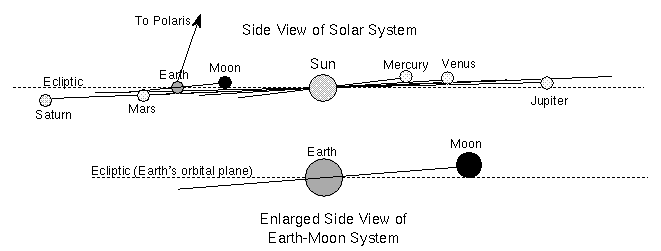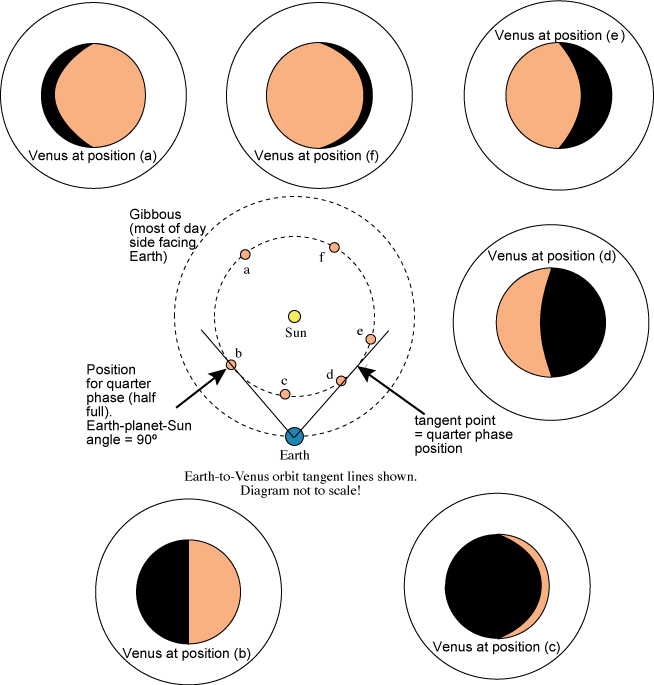All of the visible planets in our solar system stay within 7° of
the ecliptic.

flat solar system!
Venus and Mercury always stay close to the Sun. Visible within a few
hours before
sunrise or after sunset. Never visible around midnight.
Their orbits are inside Earth's orbit. (Remember that for last question of Mapping Solar System project.)
Venus and Mercury go through a complete set of phases. This proved that they
orbit the Sun and that they do not orbit the Earth.

Other planets seen in only gibbous or full phases.
New, crescent and quarter phases only possible if planet can get inside Earth orbit.
Angle boundary between crescent and gibbous phase (i.e., the angle for the
quarter phase) for the inferior planet depends on the size of the inner planet's
orbit. When the other angle, Earth-to planet-to Sun
angle,
is 90°, the inner planet is half lit up (visible as a quarter phase).

Do the "Mapping the Solar System from Earth" in the Student
Guide to make the connection between a planet's position in its orbit and
where in the sky it will appear as seen from Earth.
Retrograde motion---when a planet moves ``backward'' (westward) with
respect to its normal eastward drift against the stars. Happens when Earth is
close to the planet.

Click on image to animate
Lecture slides (select the links to view the slides)



